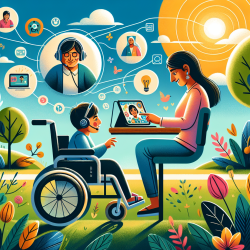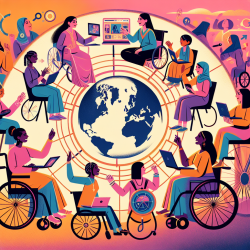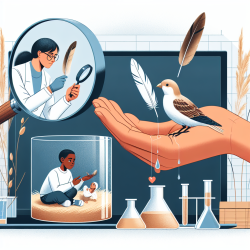Introduction
The COVID-19 pandemic has had far-reaching effects on every aspect of society, with school closures being one of the most significant changes. A recent study titled "Increases in adolescent firearm injuries were associated with school closures during COVID-19" highlights the unintended consequences of these closures, particularly the rise in adolescent firearm injuries (AFI). As special education practitioners, it is crucial to understand these findings and explore ways to mitigate such risks in the future.
Understanding the Research
The study, conducted in Atlanta, Georgia, examined data from trauma centers to explore the relationship between school closures and AFI during the pandemic. It found a significant increase in firearm injuries among adolescents during periods of unplanned school closures and remote-only teaching. The research adjusted for variables such as unemployment, seasonal variation, and COVID-19 incidence, revealing that each additional day of school closure was associated with 0.69 additional AFIs across the city.
Implications for Practitioners
As practitioners, we must consider the broader implications of school closures beyond educational disruption. Schools often provide a safe environment for students, offering not only education but also social, emotional, and nutritional support. The increase in AFI during school closures underscores the importance of these institutions in maintaining adolescent safety.
Actionable Steps for Practitioners
- Advocate for Comprehensive Safety Plans: Work with school administrators to develop safety plans that address potential risks associated with school closures, including mental health support and violence prevention strategies.
- Enhance Remote Support Systems: Develop robust online support systems to ensure students have access to mental health resources and community services even when schools are closed.
- Engage with Parents and Communities: Foster strong communication channels with parents and community organizations to create a supportive network for students during times of crisis.
- Conduct Further Research: Encourage further research into the social determinants of health and safety for adolescents, particularly in the context of school closures and remote learning.
Encouraging Further Research
While this study provides valuable insights, it also highlights the need for further research into the complex interplay between school closures and adolescent safety. Practitioners should consider collaborating with researchers to explore additional factors that may contribute to increased risks during school closures, such as access to firearms, community violence, and socioeconomic disparities.
Conclusion
The findings of this study serve as a call to action for practitioners, policymakers, and communities to prioritize adolescent safety in times of crisis. By understanding the broader implications of school closures and implementing proactive measures, we can work towards creating a safer environment for all students.
To read the original research paper, please follow this link: Increases in adolescent firearm injuries were associated with school closures during COVID-19.










